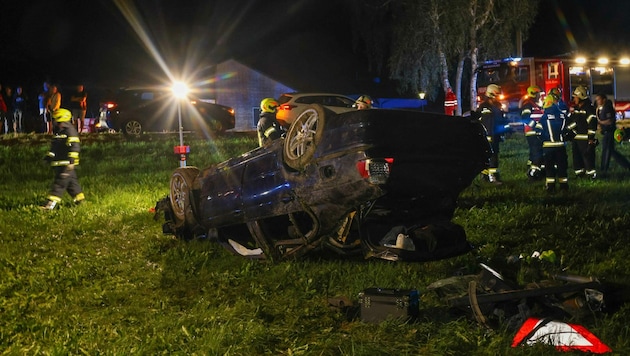100 road deaths in Lower Austria
How much the toll of blood on our roads costs
Serious car accidents cause a lot of suffering and high costs. The number of accident victims has risen in Lower Austria. And the associated financial losses are also the highest in comparison with other federal states. We are talking about billions!
There is a truly bloody trail across Lower Austria's roads: 100 people lost their lives in road accidents here last year. 8477 were injured, almost one in six of them - 1505 to be exact - even seriously.
Only two districts without fatalities
In the districts of Amstetten, Bruck an der Leitha, Gänserndorf, Korneuburg, Lilienfeld, Melk, Neunkirchen and Wiener Neustadt, there were more road fatalities than in the previous year. The number of serious injuries also rose by 117 across the country. Only two districts (Gmünd and Scheibbs) and the statutory towns of Krems and Waidhofen an der Ybbs were spared deaths on the road in 2023. The district of Mödling is the front-runner in terms of injuries, while the proportion of seriously injured people is highest in the Lilienfeld region at 28.46%.
Costs are enormous
However, in addition to a great deal of suffering and pain, road accidents also cause considerable economic damage. The costs of rescue operations, property damage, treatment costs and lost working hours, sick leave and the financial assessment of the suffering, pain and loss of quality of life are all calculated, explains Katharina Jaschinsky from the Verkehrsclub (VCÖ). In Lower Austria, these amounts totaled 1.8 billion euros last year - the highest value in a comparison of the federal states.
A car that has a stopping distance of 51 meters at 80 km/h only comes to a standstill after 74 meters at a speed of 100 km/h.

Katharina Jaschinsky (VCÖ) fordert strengere Tempolimits
Bild: VCÖ/Christopher Mavric
Speed too often fatal
For traffic expert Jaschinsky, it is clear that speed is a key factor in the causes of traffic accidents and the severity of their consequences. Road safety measures should generally be geared towards the most vulnerable road users: "A traffic system that is safe for older people and children is also safe for all other road users," emphasizes Jaschinsky. She calls for slower speeds, clear intersections and road crossings as well as sufficiently wide footpaths and cycle paths.
This article has been automatically translated,
read the original article here.











Kommentare
Willkommen in unserer Community! Eingehende Beiträge werden geprüft und anschließend veröffentlicht. Bitte achten Sie auf Einhaltung unserer Netiquette und AGB. Für ausführliche Diskussionen steht Ihnen ebenso das krone.at-Forum zur Verfügung. Hier können Sie das Community-Team via unserer Melde- und Abhilfestelle kontaktieren.
User-Beiträge geben nicht notwendigerweise die Meinung des Betreibers/der Redaktion bzw. von Krone Multimedia (KMM) wieder. In diesem Sinne distanziert sich die Redaktion/der Betreiber von den Inhalten in diesem Diskussionsforum. KMM behält sich insbesondere vor, gegen geltendes Recht verstoßende, den guten Sitten oder der Netiquette widersprechende bzw. dem Ansehen von KMM zuwiderlaufende Beiträge zu löschen, diesbezüglichen Schadenersatz gegenüber dem betreffenden User geltend zu machen, die Nutzer-Daten zu Zwecken der Rechtsverfolgung zu verwenden und strafrechtlich relevante Beiträge zur Anzeige zu bringen (siehe auch AGB). Hier können Sie das Community-Team via unserer Melde- und Abhilfestelle kontaktieren.